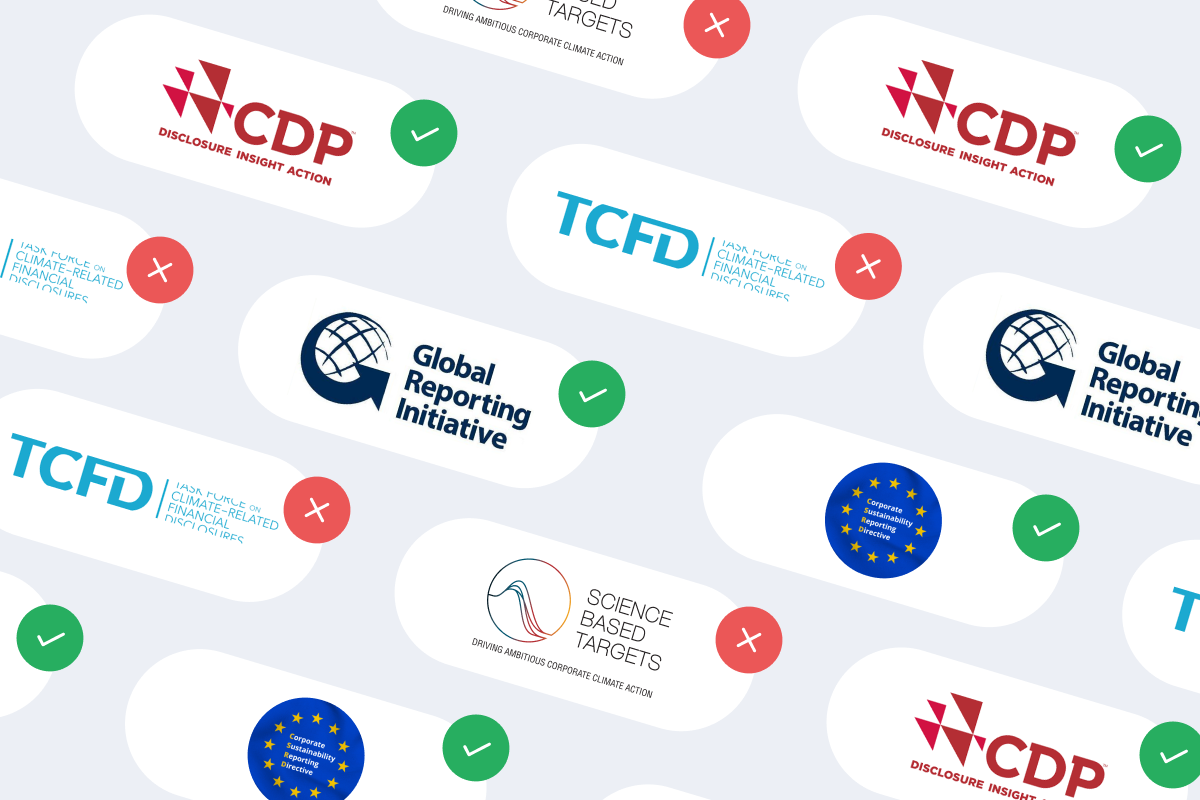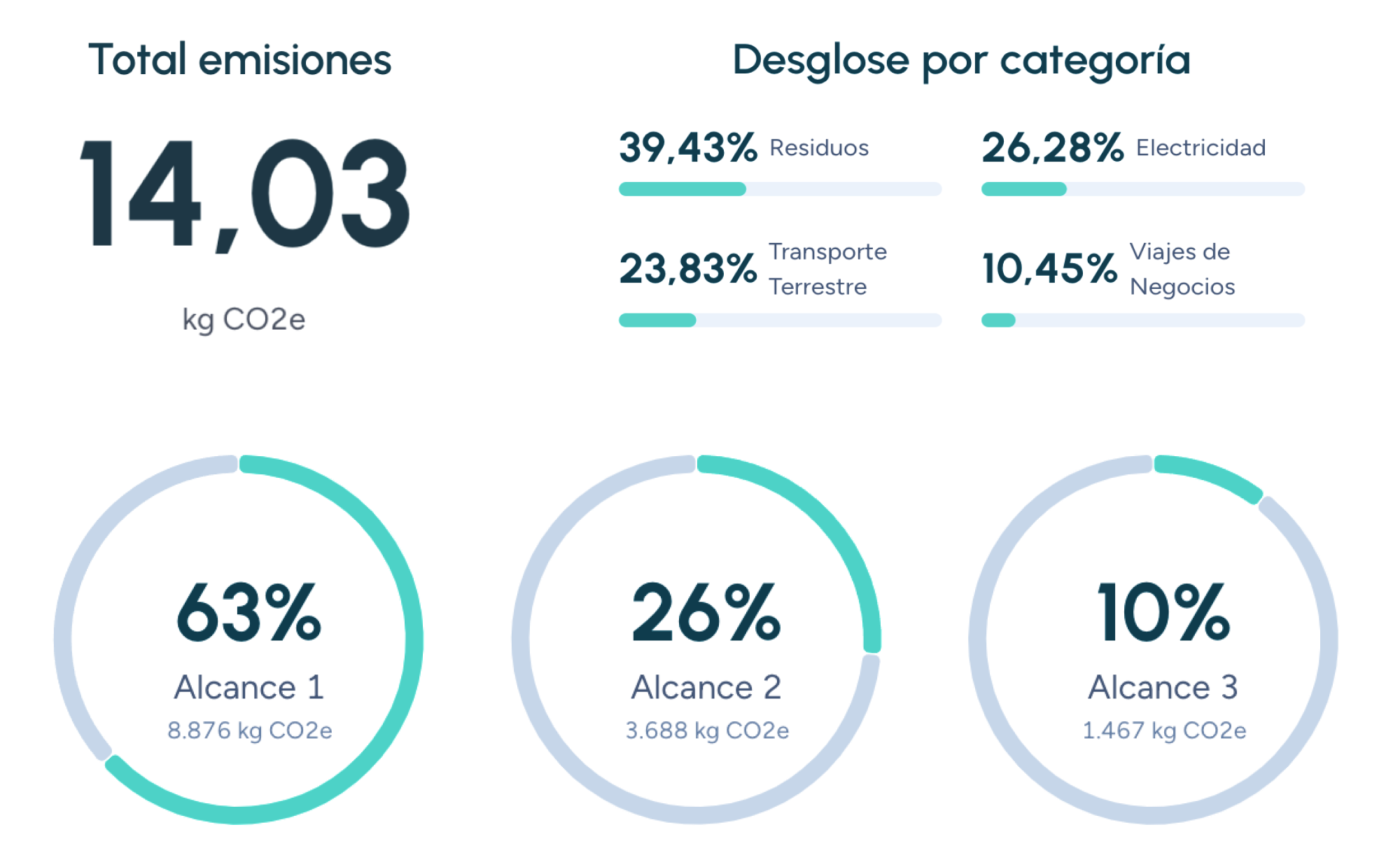C
Carbon negative
The term “carbon negative” has become a key concept in the fight against climate change. As companies, governments, and organizations seek ways to reduce their environmental impact, the goal of being “carbon negative” represents a step beyond carbon neutrality. But what does being carbon negative actually mean? How is it measured, and why is it relevant to corporate sustainability?
What does it mean to be carbon negative?
Being carbon negative means that an organization, product, or process not only offsets all the greenhouse gas (GHG) emissions it generates but also removes more carbon from the atmosphere than it emits. In other words, a carbon-negative entity not only achieves carbon neutrality but goes further by actively contributing to reducing global carbon dioxide (CO₂) levels.
This concept is directly tied to measuring the carbon footprint, which accounts for the total GHG emissions generated directly or indirectly by an activity. To be carbon negative, an organization must first accurately calculate its carbon footprint, including Scope 1 (direct emissions), Scope 2 (purchased energy emissions), and Scope 3 (value chain emissions) as outlined by standards like the GHG Protocol.
Carbon negative vs. carbon neutrality
It is essential to differentiate between carbon neutrality and carbon negativity. While carbon neutrality is achieved when generated emissions are fully offset through certified offset projects, being carbon negative involves going further by removing more carbon than is emitted.
For instance, a company achieving carbon neutrality might invest in reforestation or renewable energy projects to offset its emissions. To become carbon negative, that same company would need to implement additional measures, such as using advanced carbon capture technologies or adopting regenerative practices that absorb more carbon than their operations generate.
Why is being carbon negative important?
The goal of being carbon negative is critical to addressing the climate crisis. According to the Intergovernmental Panel on Climate Change (IPCC), limiting global warming to 1.5°C requires not only reducing global emissions but also removing significant amounts of carbon from the atmosphere. Carbon-negative companies play a vital role in this effort by actively reversing environmental damage.
How to measure and achieve carbon-negative status
Achieving carbon-negative status requires precise carbon measurement and effective strategies for reduction and removal.
Key steps to becoming carbon negative
- Measure emissions: Calculate GHG emissions accurately using recognized standards like the GHG Protocol.
- Reduce emissions: Implement decarbonization measures, such as adopting renewable energy, improving energy efficiency, and optimizing production processes.
- Offset emissions: Invest in certified offset projects, such as reforestation or carbon capture initiatives.
- Remove additional carbon: Use advanced carbon capture and storage (CCS) technologies or support regenerative initiatives that absorb more carbon than emitted.
Technologies and strategies for carbon removal
Carbon capture and storage (CCS)
CCS technology captures CO₂ emitted by industrial processes and stores it safely in underground geological formations. While CCS faces economic and technical challenges, it is considered a promising tool for achieving carbon-negative status.
Nature-based solutions
Nature-based solutions, such as reforestation, ecosystem restoration, and regenerative agriculture, are effective strategies for removing carbon from the atmosphere. These practices not only capture carbon but also offer additional benefits, such as biodiversity enhancement and water resource protection.
Bioenergy with carbon capture and storage (BECCS)
BECCS combines bioenergy production with carbon capture and storage. This approach generates renewable energy while removing carbon from the atmosphere, making it an attractive solution for achieving carbon-negative status.
Benefits of being carbon negative
Becoming a carbon-negative organization has both environmental and business advantages:
- Competitive advantage: Carbon-negative companies are seen as sustainability leaders, enhancing their reputation and attracting environmentally conscious customers.
- Regulatory compliance: Staying ahead of environmental regulations can help companies avoid penalties and benefit from government incentives.
- Long-term cost savings: Investments in energy efficiency and sustainable technologies can lead to significant long-term savings.
- Access to new markets: Many companies and governments prioritize suppliers and partners with strong sustainability commitments.
Manglai’s role in the transition to carbon negativity
To achieve carbon-negative status, companies need advanced tools to effectively measure, reduce, and offset their emissions. Manglai offers an integrated solution that includes real-time emissions tracking, AI-driven customized reduction plans, and access to a network of certifiable offset projects. These features enable organizations not only to achieve carbon neutrality but also to advance toward a carbon-negative future.
Companies that trust us

Carbon sinks
Explore the crucial role of carbon sinks in the fight against climate change, their ability to absorb CO₂, and strategies to enhance their effectiveness in reducing the carbon footprint.
CBAM: EU Carbon Border Adjustment Mechanism
Analyse how the EU taxes imports according to their carbon footprint, the sectors affected, and the steps companies must take to prepare for 2026.
COP (Conference of the Parties)
The COP (Conference of the Parties) is the supreme decision-making body established under the United Nations Framework Convention on Climate Change (UNFCCC).
Guiding businesses towards net-zero emissions through AI-driven solutions.
© 2025 Manglai. All rights reserved
Política de Privacidad


